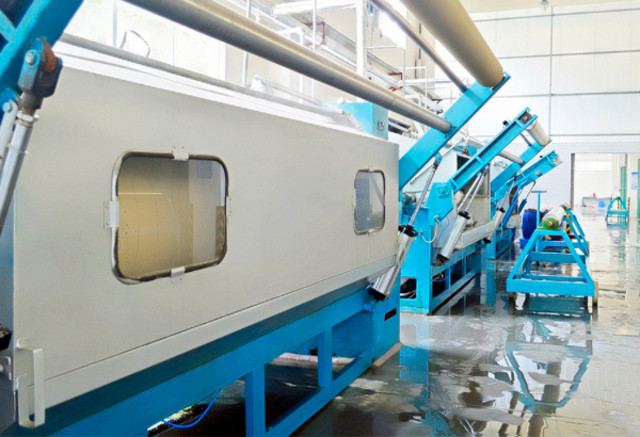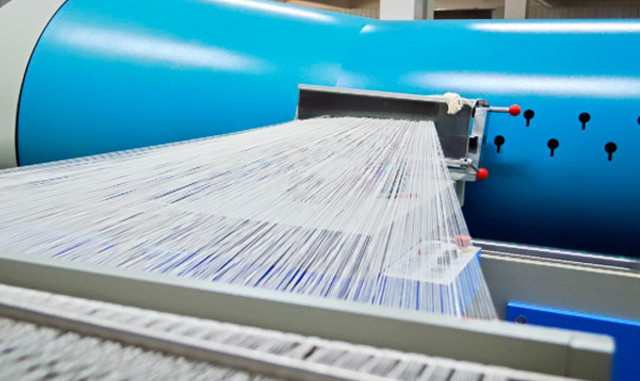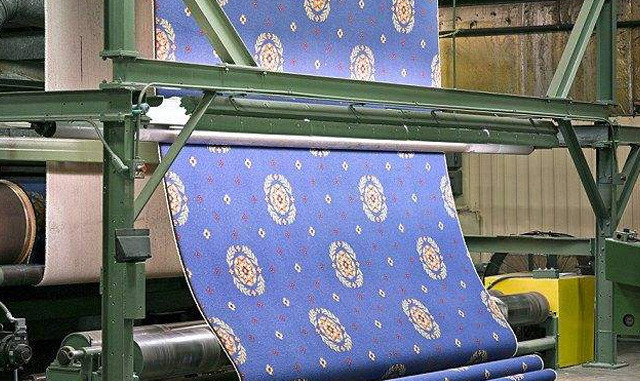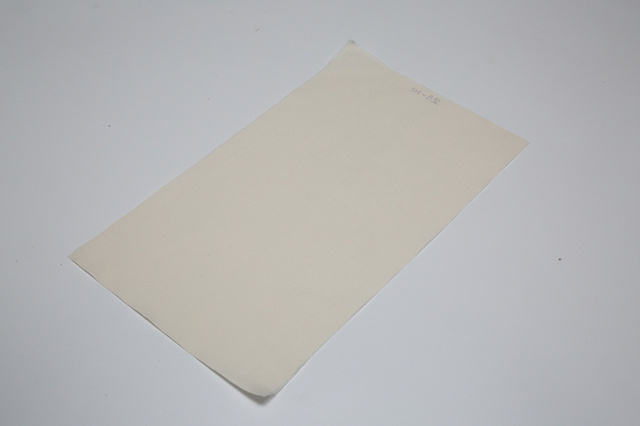Ye Jianchun: Current Situation and Prospects of China's Cotton Textile Industry
On June 17, at the 2021 China International Cotton Conference co-hosted by the China Cotton Association and the National Cotton Trading Market, Ye Jianchun, Chief Engineer of the China Cotton Textile Industry Association, took the title of "Operation Status and Prospects of China's Cotton Textile Industry" and gave a brief introduction to the cotton textile industry. The current overall operation of the industry is introduced.
In recent years, the production capacity of China's cotton textile industry has gradually developed towards intelligence, automation and green development. According to the statistics of the Cotton Textile Industry Association, as of 2020, my country's spinning capacity is 110 million spindles and 1.04 million looms. Judging from the overall situation from January to May this year, the cotton spinning situation is very good, and the opening rate has greatly rebounded. Ye Jianchun said that the overall spinning capacity is expected to rebound this year.
From the perspective of equipment production efficiency, the overall production in 2020 is basically stable, and the output of gauze is basically stable. Affected by the epidemic, the yarn output last year was 16.41 million tons, a year-on-year decrease of 10.3%; the cloth output was 46 billion meters, a year-on-year decrease of 17.9%.
From the perspective of equipment development, thanks to the development of intelligent manufacturing in the industry in recent years, equipment has developed rapidly. In terms of intelligent manufacturing during the "13th Five-Year Plan", cotton spinning ranks first in the entire textile industry; after the "14th Five-Year Plan", intelligent manufacturing will achieve faster improvement. At present, the biggest problem in cotton spinning is the problem of people, and the difficulty of recruiting workers in factories is very prominent. In addition, the aging of technical personnel and the lack of overall enterprise management talents are also facing great pressure.
He gave a brief introduction to the advanced equipment in the industry. From the perspective of new rotor spinning, the matching speed of automatic rotor spinning will also be a major development direction in the technological transformation of coastal areas and central areas in the future. In addition, there are thick and thin links and fine links, mainly ring spinning. After supporting automation, especially for enterprises that spin mass production, it is possible that the acceleration of this technological transformation will be faster and faster. In addition, including automatic drawing-in, shuttleless looms and high-speed looms are all representative of the future development of equipment. With the transformation of intelligent manufacturing facilities, the development of the equipment industry will be greatly accelerated.
From the perspective of industry fiber usage, my country's cotton fiber usage in 2020 is 6 million tons, mainly for cotton spinning. Compared with 2019, the amount of cotton used in cotton textiles in 2020 will decrease by 13% year-on-year, and the amount of non-cotton fibers will decrease by 8.4% year-on-year.
From the perspective of the prosperity of the cotton textile industry, it is 50.4% in 2021, an increase of 2.5% year-on-year; 49.2% in April, the prosperity index is lower than that in March. Judging from the situation in the first quarter of this year, thanks to the effective domestic epidemic control work, the overall operation is good, and the production index and purchase index have increased compared with last year. April was relatively lower than that in March, but overall, the rate of increase in May was very obvious, and the overall decline was controllable.
From the perspective of the main business income of the company in 2020, it has decreased by 8.6% year-on-year, the total profit has decreased by 13.8% year-on-year, the export delivery value has decreased by 19.6% year-on-year, and the cumulative loss has increased by 0.83 percentage points year-on-year. Judging from the monthly situation, since February last year, due to the impact of the epidemic, the main economic indicators have shown a continuous relative downturn, and will start to turn from negative to positive in 2021. Thanks to the country's strong control of the epidemic, the operating rate of textile enterprises has gradually recovered.
Since August and September last year, the orders and production and operation of cotton spinning enterprises have gradually improved, especially the profit has been significantly improved. From January to April this year, the overall situation of textile enterprises is very good, especially the situation of pure cotton yarn enterprises is optimistic, which is the best stage in the past ten years. The production situation of cluster enterprises is basically the same as that of key enterprises. The good operation of pure cotton yarn this year, especially in the first half of this year, has greatly improved the development of our cotton spinning industry.
In 2020, the fluctuation of cotton will be large, and the change in the price difference between internal and external cotton will have a very obvious impact on textile enterprises. For textile enterprises, the biggest pressure comes from fluctuations in cotton prices. Their real appeal is to seek stability rather than decline. Especially after June, textile enterprises obviously felt that the orders were showing a downward trend, so enterprises were very worried that cotton prices would fluctuate accordingly.
Judging from the operation of the chemical fiber market, generally speaking, the increase and speed of chemical fiber have developed very fast in recent years, especially cellulose fiber. Affected by the increase in its production capacity, the price of viscose will drop more than that of cotton in 2020. From the point of view, the decline in the price of viscose staple fiber is more due to the pressure of capacity expansion. What we know now about lyocell fiber may be that the production capacity planning of every large company will continue to increase in the next few decades, and its substitution effect on cotton is also very obvious.
The current situation facing the industry: (1) The global economic and trade situation is complex and severe. At present, we need to face a complex and severe trade situation, including the political suppression of China by the international community, the impact of the epidemic, rising export freight rates, appreciation of the RMB and other factors. Opportunities and challenges coexist, and the situation is complicated. (2) The domestic consumer market demand is upgraded. In recent years, the domestic situation has improved, including textiles and clothing, which has a great relationship with the improvement of domestic demand in the market. However, it is also necessary to have an objective understanding of the current situation of the textile and apparel industry, such as the recent transfer of orders from South Asia and Southeast Asia to the country due to the recent epidemic, how much is the quantity and how high the added value is. From the perspective of the back-end situation, the situation of clothing enterprises and home textile enterprises is not as hot as the market discussion. After June, the orders for clothing also have a clear downward trend. (3) The current epidemic continues, and there are uncertainties in the timing and extent of global consumption recovery. Compared with the increase in the export of textiles and clothing at the same stage in previous years, the overall export situation this year is still slightly light, and it is not appropriate to be overly optimistic.
Countermeasures: First, make full use of both domestic and international markets. The second is to focus on product differentiation. As a textile industry, cotton yarn is eternal, but at the same time, we must also pay attention to small batches and multi-variety to achieve better product added value. The third is technological transformation to realize the development of automation and intelligence. The fourth is to keep warm in groups and realize cluster development. In the future, the gathering of high-quality enterprises and large enterprises in China's textile industry will be more obvious. The fifth is to extend the industrial chain. In addition to taking the high-end route to achieve sustainable development that truly meets market demand and corporate interests, extending the industrial chain is also the only way.








 Tel:+86-519-86709609
Tel:+86-519-86709609 Fax:+86-519-86708989
Fax:+86-519-86708989 Mail:shenghui@shenghuitextile.cn
Mail:shenghui@shenghuitextile.cn Address: Donghua Village Industrial Park, Hutang Town, Changzhou City
Address: Donghua Village Industrial Park, Hutang Town, Changzhou City